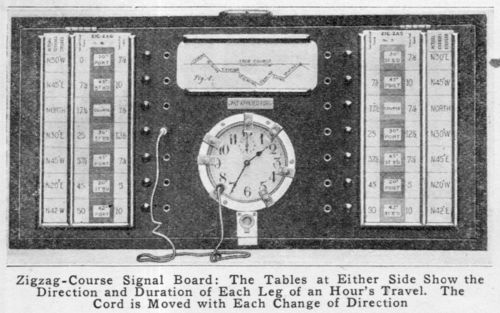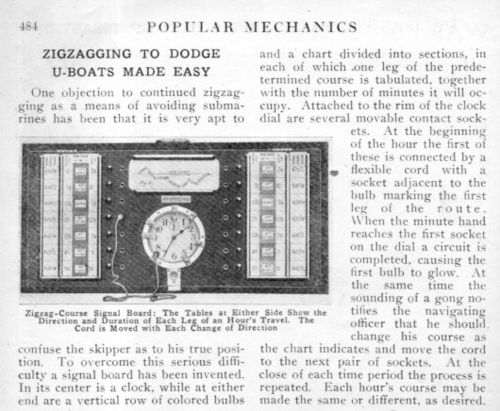JF Ptak Science Books Quick Post
"The little zigzags of embarrassment."-- J. Austen Emma I. xv. 282, 1816
Well, these be not zigzags of embarrassment, but zigzags of necessity, and the means for keeping track of them. And too there's nothing in Jane Austen to relate to submarines and their evasion except for an appearance of the word "zigzag", which is actually a fairly old word in English (coming from the French "sigsak"), reaching down into the very early 18th century. It is older than the word "submarine" as it is used to describe an underwater vessel, and curiously in light of Ms. Austen it appears in print very close to the date of Emma, in 18281. And so the course of a ship could be documented for those in control of her, keeping track of the true destination in spite of all the zigs and zgas made to confuse and elude a German sub. This is another example of an empire controlled with string, as we have previously seen here in the use of long collections of string that kept track of the British rail. String isn't as simple as it seems.
- This short article appeared in Popular Mechanics, March, 1918, page 484.
Notes:
1. Submarine, noun, from the OED: 1828 Literary Reg. 18 Aug. 191/1 The navigation under the water, instead of on the surface, in vessels called sub marines, is also a happy invention, which preserves us from storms and shipwrecks.





Comments